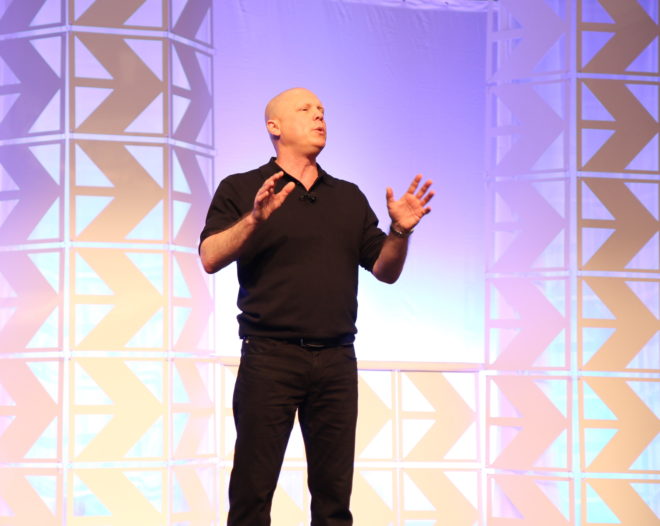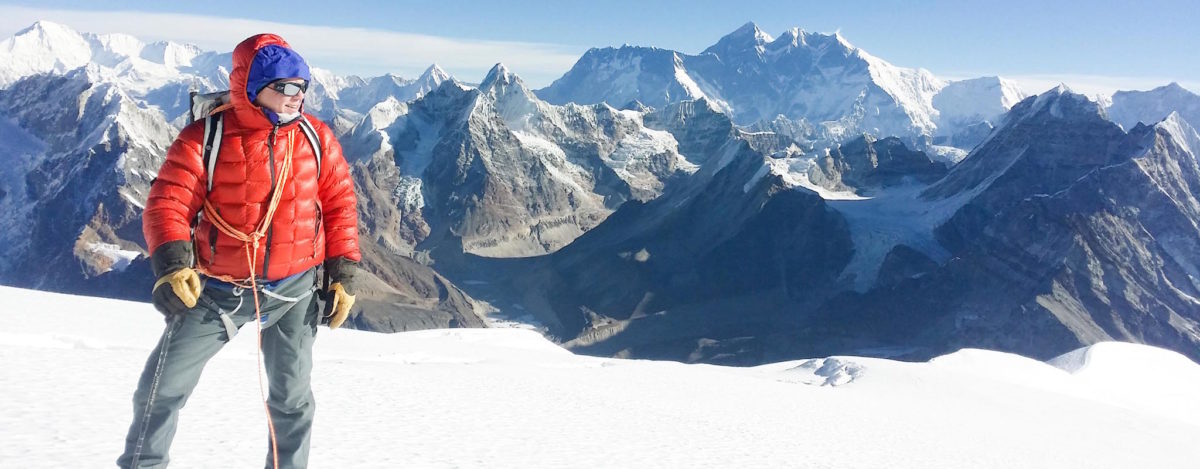First T1D to Summit Mount Everest
In May 2006, he was the first person with diabetes to summit Mount Everest. He’s also climbed the highest peaks on all seven continents and trekked to both the North and South Poles. In some of the most extreme conditions on earth, he’s has led 15 exhibitions that were previously unmapped and unknown in Greenland, Patagonia, the Mountains of the Moon (east Africa), the Sahara Desert and the Thar Desert of India. Having had type 1 diabetes for 40 years, Will Cross is one of the most renown members of the type 1 community, and has advised type 1 climbers and explorers across the globe. When he’s not climbing or training for a climb, he’s speaking and working with Tandem Diabetes on a project called “What’s your Everest,” which encourages people with diabetes to get out and do something that’s important to them. From his home in Pittsburgh, Pennsylvania, he tells Beyond Type 1 his story about climbing and diabetes and how he excels at managing both.

“What do you want to know?” he asks me with a brashness that is at once both charming and playful. We start at the beginning with his diagnosis at age 9 in 1976 and how he got into climbing. “I never aspired to be a baseball or football player,” he tells me. “I just wanted to climb; diabetes didn’t hinder that desire. I climbed out of the crib; I climbed the curtains.” He laughs. Cross speaks with a unique combination of directness and humor. I am immediately drawn into his story, delighted by the frankness in which he tells it.
In 1985, he took a gap year after high school and applied to go to Patagonia. He describes the application form: “It said in big letters at the top, if you have diabetes or epilepsy, we can’t consider you; don’t even apply. And that pissed me off.” He applied anyway though, after he wrote a letter to “the guy in charge of the exhibition,” which happened to be none other than Prince Charles. In order to convince him that he was capable of going, he helped run a selection group that prepared candidates for climbs. He describes it as a “Bear Grills kind of weekend.” Based on his research, he helped design the program and chose the people who would go. Soon after, he was granted royal permission to attend the Patagonia exhibition.
“Patagonia was a disaster,” he says. “We ran out of food.” He goes on to describe how they hunted and foraged to stay alive. “It was nerve wrecking,” he says. “You want stress in your life? Try starvation.” He talks of the effort it took to get there and how he wasn’t going to throw in the towel because of that and because of his pride. Some days they caught fish, and other days they just had moss tea and bark to eat. “Some days I only had two units of insulin,” he says.
“What it did teach me,” Cross says, “is that inherently, there are perceptions of limitations and what you can do, but I figured it out and it formed the basis of walking to the South Pole in 2002. Someone with type 1 had never done it before. You’re in a place -4°F on a warm day and there was the question of what you were going to do when it really freezes. I was told I was going to lose my fingers and toes because of nerve damage and lose my sight, but I didn’t think so. I also didn’t have any proof though either. I partnered with the University of Pittsburgh to find out how someone with type 1 could do it, and it turns out you can.”
I ask Cross about how he prepares for exhibitions and he tells me that hiring a trainer has proved to be the best way. He talks about a smarter way of working out and the importance of balance and small muscle training. “I’m almost 50 years old, and I needed a better way to stay fit.” He also does a lot of research ahead of time on the mountain he’s climbing and the route he plans to take. He gets his life in order before going by paying bills and ordering extra diabetes supplies forces trips. He spends time quietly thinking—his version of mediation. “Nothing sitting cross-legged though,” he assures me.
He’s given advice to Svati Nerula who climbed Everest in 2015 when an earthquake rocked Nepal and caused an avalanche, which killed a total of 9,000 people. “The big thing was the management of insulin and where to keep it,” he says. “I told her to store it in various locations in case of an avalanche, theft or it freezing.” He tells me that you need more insulin when you’re under stress and elevation sickness is similar to a low blood sugar. “You also need to drink more water,” he says. “because ketones are a natural byproduct of elevation.”
“Do you train with other climbers?” I ask.
“No,” he says adamantly. “I’m not a ‘group kind of guy.’ If there’s a group bike ride, I’m not attending; I’d rather just do it on my own. That’s true with most training.”
“Why is that?”
“I don’t like people,” he jokes.
“Is that the nature of climbing?” I ask. “Being alone?”
“There’s the part of the Hollywood version of climbing that it’s a solo job, almost monastic, where you’re dedicated to this altruistic mission, but the reality is you’re climbing a rock and most of the world doesn’t care. Your devotion and commitment to the task—that’s what’s important though. It’s the same with any athlete really.”
“When did you think you could have done better?” I ask.
“Marriage,” he says and laughs. “Seriously though, it’s exciting to be on the edge of ‘no one has done this before,’ but it would have been nice to have had a community to go to for advice when I did some of these climbs. I had to learn the hard way through trial and error. It was dangerous and I’m fortunate to have gotten away with it.”
“What was your toughest climb?”
“Definitely Everest. I was on Everest three times. In 2004, I had an oxygen malfunction around 20,000 feet. In 2005, I wasn’t comfortable with the weather and I was a football field away from the top, but I turned around. And in 2006 I summited.”
“How important is patience when you’re climbing Everest?”
“Very,” he says. “It takes patience, experience and humility. The double-edged sword of climbing is that it takes such a physical and mental toll to be successful that you push so hard and with that you can make a mistake and freeze to death or not be able to come down.”
“Is it harder to come down than summit?”
“Way harder,” he says. “Going up is what you’ve prepared to do; you haven’t trained to come down. If you celebrate too much, you lose your edge, your hunger. That’s when you make mistakes.”
“What do you fear most?”
“An avalanche,” he says immediately; then he adds, “usual fears—falling in a crevasse and never coming out. Basic death-fear.” He laughs. “I have four kids and I want to come home in one piece. That kind of fear keeps you honest and accountable; makes you prepare correctly, both mentally and physically.”
“When you summited Everest, what did you think about?” I want to know, “What did you feel?”
“Relief,” he says. “It was as much terrifying, as it was rewarding.”
I try to imagine the stillness, the whiteness and the thin air of that mountain, but Cross doesn’t sugar coat it or speak in metaphors. He tells it like it is, without hesitation and without apology.
“You like to think you’re thinking logically,” Cross says, “but you aren’t. You are right on the edge of what a human is capable of doing. You want to just keep your sh*t together and get down in one piece.”
Read The Deadliest Earthquake of Nepal and How this Type 1 Survived Everest.





